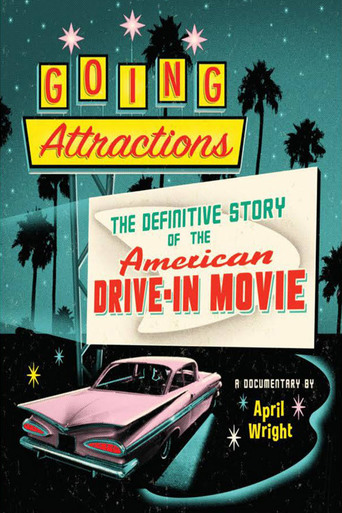Inclubabu
Plot so thin, it passes unnoticed.
Blucher
One of the worst movies I've ever seen
Lollivan
It's the kind of movie you'll want to see a second time with someone who hasn't seen it yet, to remember what it was like to watch it for the first time.
Zlatica
One of the worst ways to make a cult movie is to set out to make a cult movie.
moonspinner55
The birth, the boom, the death and the (slow-building) rebirth of the drive-in movie theater, chronicled in this fun, if thin and low-keyed documentary from writer-producer-director April Wright. Outdoor theaters began to crop up in the U.S. in 1933, but it was in post-WWII America that Hollywood and the automobile made for the perfect marriage. In the 1950s, teenagers used the drive-in as a good excuse for getting out of the house with their friends, while in the late '70s many screens were turning to X-rated titles to turn a profit (which, along with many other factors, is credited here with killing the drive-in, if temporarily). Communities are shown turning out for the new era of the drive-in experience, while owners and aficionados wax poetic about the days of loading the kids in the car and seeing a double feature for a dollar on a Friday night. Entertaining memories and an avalanche of photographs (which go by at too-fast a clip, some too fuzzy to see and some repeated) make the happy/sad history of the drive-in theater a nostalgic journey, particularly for those who were around at their peak. **1/2 from ****
Dalbert Pringle
Believe it, or not, Drive-Ins have been around (at least in the USA) since 1933. But it wasn't until the late-1940s (and especially throughout the 1950s) that Drive-Ins really flourished, big-time, all across America, and beyond.It is estimated that in 1958 there were something like 5000 Drive-Ins going strong all across the States. While, in comparison, today, there are less than 400 still in existence.Through stills, vintage film clips, and interviews with historians and Drive-In owners, alike, this fairly interesting documentary moves its story along, decade-by-decade, giving the viewer a thorough history of this phenomenon known as the Drive-In.From Drive-Ins having to compete with TV in the 1950s, to the invasion of mall cinemas in the 1970s, to the video explosion and cable TV in the 1980s - The survival of the Drive-In (in the last 30 years, or so) has certainly taken quite a beating - But, according to what the experts say - "They aren't dead, yet!".So, with that said, who knows what the future holds for the Drive-In?

